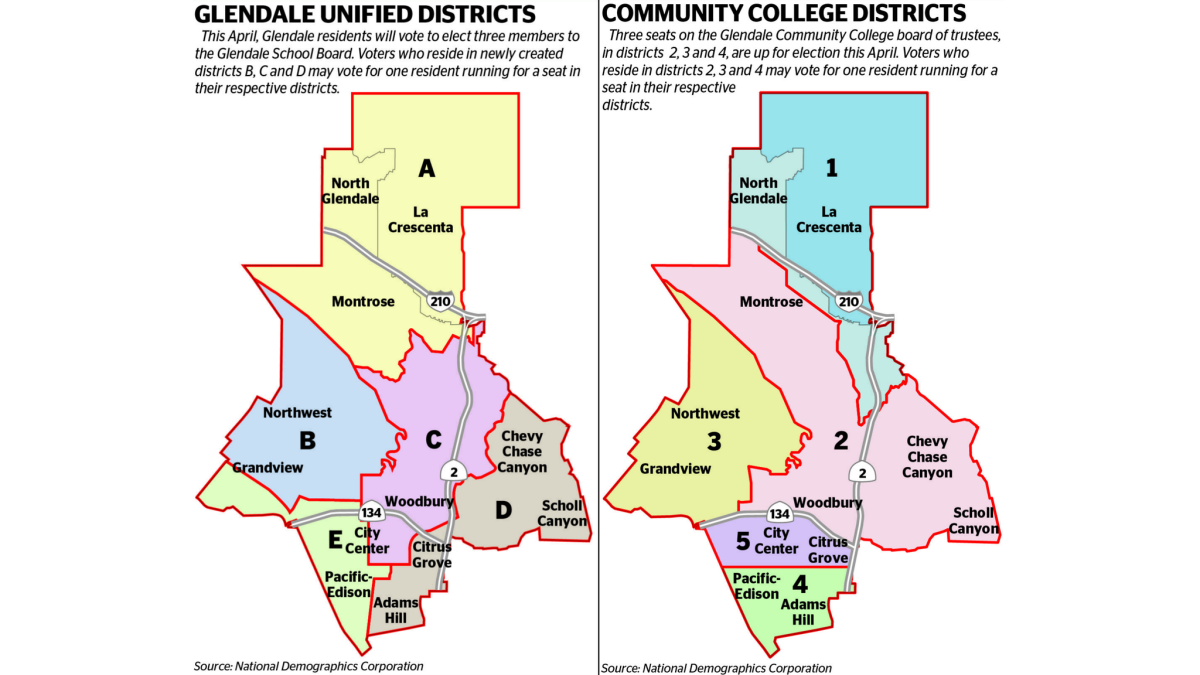City, school officials explain new voting districts to residents at town hall meeting

With about four months until voters head to the polls to elect local leaders in April, residents will see two unprecedented changes on the ballot.
Eager to inform residents about what to expect, city and school officials held a town hall meeting Tuesday night, which drew about 50 people to the community room of the Glendale Police Department, where they heard about the upcoming changes.
Next year, instead of voters electing residents to serve on the Glendale School Board or Glendale Community College Board of Trustees regardless of where they live in the Jewel City, those officials will be elected to represent a district in which they reside.
Join the conversation on Facebook >>
With reluctance, officials on both boards switched from an at-large voting system to a district-based one, with Glendale Community College officials making the change in 2015 under the threat of litigation.
Meanwhile, Glendale school board members adopted a district-based voting system earlier this year after the district was sued for allegedly violating the California Voting Rights Act.
The law mandates a district-based system in elections where an at-large method would dilute the votes of minority groups.
The complaint filed against the school district alleged racially polarized voting in Glendale and that Glendale Unified’s at-large election method impairs “the ability of people of certain races, color or language minority groups, such as Latino voters, to elect candidates of their choice or to influence the outcome of elections conducted in the Glendale Unified School District.”
As part of the school board members’ decision to settle the case and not incur legal fees to fight it, they agreed to switch to a district-based system.
The city of Glendale, however, will continue to elect residents to serve on City Council, and as City Treasurer and City Clerk, through its at-large system, said City Atty. Michael Garcia — at least for now.
“If we get contacted, we’ll have to look at the issue further,” Garcia said during the town hall. “When we look at the data, we actually don’t think there’s racially polarized voting in our community.”
While the college’s voting districts are numbered, Glendale Unified’s are lettered.
On the Glendale School Board, the three seats up for election this April are in Districts B, C and D, encompassing the middle and southeast corner of the city.
Meanwhile, Glendale Community College trustee seats that are up for election are in Districts 2, 3 and 4, made up of the middle and southern parts of Glendale.
The voting districts, which were drawn to encompass roughly the same number of residents within each one, do not align to the same boundaries.
Glendale Unified’s voting map mostly adheres to the elementary and high school attendance boundaries across the city, a major factor that shaped the school district’s map, but one that Glendale Community College’s map did not need to consider.
Residents running for a seat in each of those districts must receive the most votes from fellow residents residing in their district to win the election.
In both cases this spring, the majority of La Crescenta and Montrose residents will not vote for a college trustee or school board member because the seats representing those districts — known as A for Glendale Unified and 1 for Glendale Community College — will not be up for election until April 2019.
--
Kelly Corrigan, kelly.corrigan@latimes.com
Twitter: @kellymcorrigan
